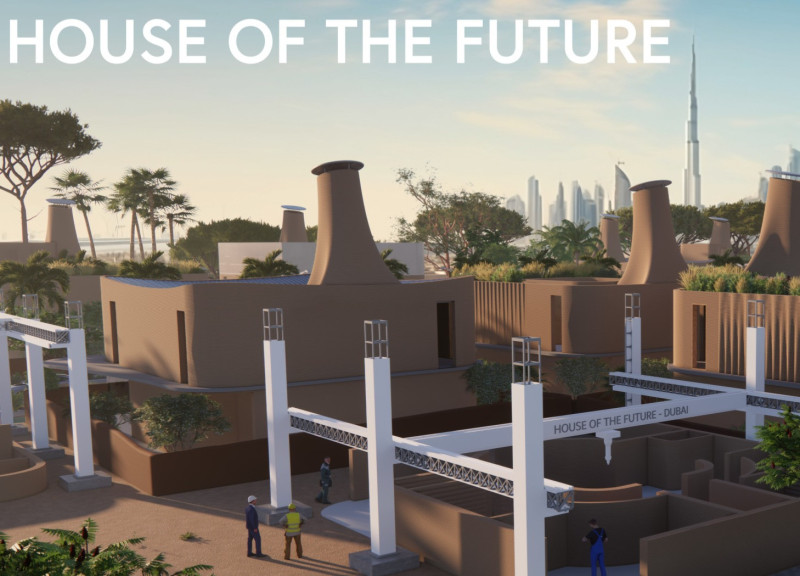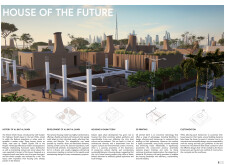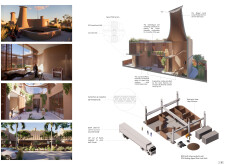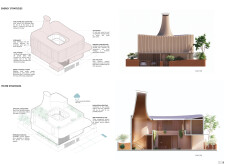5 key facts about this project
### Overview
Located in Dubai, the project aims to redefine residential living through a design that is both environmentally responsible and culturally relevant. By integrating cutting-edge technologies like 3D printing with sustainable building practices, the design fosters adaptable living spaces that reflect local heritage. The project's foundation is rooted in a modern interpretation of Emirati architectural traditions, particularly influenced by the historical Al Bait Al Sha'bi.
### Spatial Configuration and User Adaptability
The layout prioritizes the relationship between private and communal spaces, featuring open courtyards that facilitate social interaction among residents. Flexibility is a key aspect of the design, allowing homeowners to customize features such as the number of bedrooms and courtyard arrangements. This adaptability ensures that the residences cater to diverse lifestyles while promoting community cohesion.
### Materiality and Sustainability
The project employs a variety of materials selected for their eco-friendly properties. Key components include 3D printed earth, comprised of 80% natural earth and 20% binding agents like rice husk ash, which provides thermal mass and reduces carbon footprint. Additional elements, such as camel hair insulation and solar panels, enhance energy efficiency and contribute to the overall sustainability profile. Innovative architectural features like wind towers facilitate natural ventilation, minimizing reliance on mechanical cooling systems, and thereby supporting a passive temperature regulation strategy.






















































